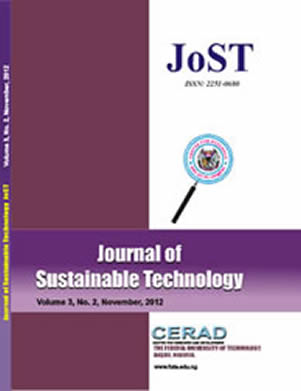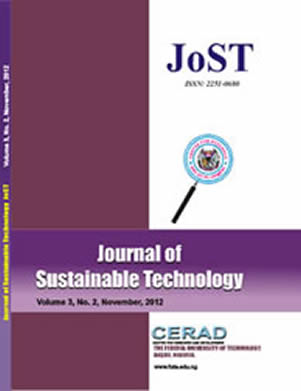In an effort to determine the contribution of the environment to fungi contamination
in foods and food processing, one-hundred and six samples comprising of water, food (cheese,
cheese whey) and slime (biofilm) from food processing environments (Abattoir, cheese industry
and water industry) were collected and processed using standard conventional methods to detect
the presence of fungi with particular reference to Candida spp. A total of 152 isolates of Candida
spp. was obtained, after which characterisation of isolates was carried out to determine species
present. Results obtained showed fungi counts ranging from 1.8x102 - 3.5x103 (CFU/ml) in samples
from the abattoir, 5.0x101 - 6.31x103 (CFU/ml) in cheese samples, and 9.5x101- 8.1x103 (CFU/ml)
in samples from the water processing industry. The percentage distribution of the various species
identified were as follows; Candida albicans 37.50%, C. krusei 22.37%, C. paraplopsis 12.50%,
mouldy growth 7.24%, mixed growth 13.82%, and those without growth 6.58%. However, the
distribution observed in this study confirms the higher prevalence of C. albicans above other
species and the emergence of other pathogenic non-Candida albicans spp; C. krusei and C.
paraplopsis. Which calls for caution in our food processing industries, as the counts recorded
were higher than standards required in food and water. Therefore, the implementation of food
safety regulatory measures for the control of fungi (Candida spp) in food processing environments
and foods especially in Nigeria plagued with the emergence of high-risk patients immunecompromised
from poor feeding, health and standards of living should be considered a priority.
Keywords: Isolation, Identification, Candida spp, Food, Environment
PAPER TITLE :ISOLATION AND IDENTIFICATION OF CANDIDA SPP FROM FOOD AND FOOD PROCESSING ENVIRONMENTS
JOURNAL Of SUSTAINABLE TECHNOLOGY | VOLUME 7 NUMBER 1 2016
Paper Details
- Author(s) : 1ADEKOLUREJO, O. O. and 2ADETUNJI, V. O.
- Abstract:



